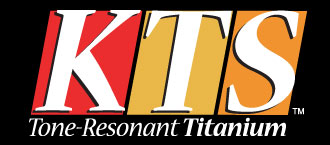What process is used in making KTS Tune-O-Matic saddles...
Most saddles in Tune-O-Matic bridges that we see on the market are made of a zinc alloy. They are made with a casting method of pouring molten metal into a mold. Because molten metal is exposed to atmospheric air during casting, the saddle made this way have many pores in its structure. Therefore, the quality is mediocre in terms of structural or metallic quality. If you look at it through a magnifying glass, you find the texture to be chinky or spongy. It looks so brittle and unattractive. Although this is the demerit, we know the merit as well; the casting method is suitable for making products of a complicated shape in large quantities at low cost. Using the die casting method of forming molten metal by applying pressure to it, which is a variant of the casting method, it is now possible to make a product of fine texture with the least gas entrainment thanks to the advance in technology. Tune-O-Matic bridges have very complicated shapes. To make them in quantities, the casting or die casting method is presently the only method we can use. If we cut Tune-O-Matic bridges out of a chunk of metal instead of using the casting method, the cost per bridge may be equal to the price of one inexpensive guitar. Though it may sound contradictory, how about spending more time and effort on making the saddle that is a key part in producing the guitar sound and directly receives the string vibration?
To craft a guitar body, nobody will use a particle board made by compressing a large amount of saw dust.
A large ingot smelted and formed in a vacuum arc melting furnace is used to make the Tune-O-Matic saddle of KTS. It is bloomed and rolled into wire rods called wrought products. These wire rods are cold-rolled several times, formed into a shape as viewed from the side of the saddle, and then annealed or heat-treated in a high-temperature argon gas atmosphere. Annealing is done to remove rolling stress from the metal and to repair the somewhat damaged crystal structure. The wire rods processed this way then go to the final machining process. You might say "So what?" We have mentioned this technicality because we hope the customer understands that our company considers the saddle a very important part as the point of support for string vibration.
TOM Saddles >>>
TOM Saddles >>>

